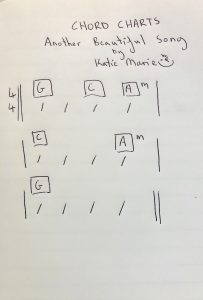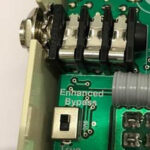Learning to play the guitar is an exciting journey, and one of the first steps for any beginner is understanding and using guitar chord charts. If you’re just starting out, deciphering music notation can seem daunting. Thankfully, Beginner Guitar Chord Charts offer a simple and effective way to learn chords and play your favorite songs quickly. This guide will break down everything you need to know about beginner guitar chord charts, helping you strum your first tunes in no time.
What is a Guitar Chord Chart?
A guitar chord chart is a visual representation of a guitar chord. Think of it as a simplified map that shows you exactly where to place your fingers on the fretboard to play a specific chord. For beginners, these charts are invaluable because they bypass the need to read complex musical notation, allowing you to focus on finger placement and getting the right sound. They are especially useful for studio sessions, practice, or simply learning new songs.
Types of Beginner-Friendly Guitar Chord Charts
When you’re starting out with guitar, you’ll encounter a few different types of chord charts. Each has its own way of presenting information, and some are more beginner-friendly than others.
Chord Diagrams
Chord diagrams are perhaps the most common and visually intuitive type of beginner guitar chord chart. They represent the guitar neck as if you were holding it upright.
- Vertical Lines: Represent the strings of the guitar. The leftmost line is usually the thickest string (low E), and the rightmost is the thinnest (high E).
- Horizontal Lines: Represent the frets. The top line is the nut (the start of the fretboard).
- Numbers or Symbols: Above the diagram often indicates the fret number where the chord is played. If no number is present, it’s assumed to be played in the open position (near the nut).
- Dots: Placed on the diagram to show where to put your fingers. Numbers inside the dots indicate which finger to use (1 for index, 2 for middle, 3 for ring, 4 for pinky).
- “X” above a string: Means that string should not be played.
- “O” above a string: Means that string should be played open (without fretting).
 Beginner guitar chord diagram example showing a C major chord
Beginner guitar chord diagram example showing a C major chord
Chord diagrams are excellent for beginners because they are visually clear and easy to understand at a glance. They quickly show you finger positions for various chords.
Lyrics with Chords
Another super accessible format for beginners is lyrics with chords. In this type of chart, the lyrics of a song are written out, and chord names are placed directly above the words where the chord changes occur.
[G] [C]
Happy birthday to [G]you,
[D] [G]
Happy birthday to you,This style is incredibly straightforward and popular for learning songs quickly. You don’t need to know rhythm notation; you simply strum the indicated chord as you sing the lyrics. While very simple, lyrics with chords charts are fantastic for getting started and playing along to songs immediately.
Simplified Chord Charts
Sometimes, for simpler songs, you might find chord charts that combine elements. These might show chord names in sequence for song sections (verse, chorus) or use abbreviations to represent sections of a song. The key is simplicity and focus on the essential chord progression.
For example, a simplified chart might look like this:
Verse 1: G – C – G – D
Chorus: C – G – D – G
This type of chart is less visually detailed than diagrams but provides a quick roadmap of the song’s chord structure.
Reading a Basic Guitar Chord Chart (Diagrams)
Let’s dive deeper into reading chord diagrams, as they are a cornerstone of beginner guitar chord charts. Here’s a step-by-step guide:
-
Identify the Chord Name: The chord name (like C, G, D, Em, Am) is usually written above the diagram. This tells you which chord you are learning.
-
Understand the Grid: The grid represents the guitar fretboard. Vertical lines are strings (from thickest on the left to thinnest on the right). Horizontal lines are frets.
-
Look for Finger Placement Dots: Dots indicate where to place your fingers. Match the dot’s position on the grid to the string and fret on your guitar.
-
Finger Numbers: Numbers inside the dots (1, 2, 3, 4) tell you which finger to use:
- 1: Index finger
- 2: Middle finger
- 3: Ring finger
- 4: Pinky finger
-
“X” and “O” Symbols:
- “X” above a string means “mute” or don’t play that string.
- “O” above a string means play that string “open” (without pressing down on a fret).
Example: Reading a C Major Chord Chart
Looking at the C major chord diagram:
- You’ll see dots on the 2nd string (B string) at the 1st fret, 4th string (D string) at the 2nd fret, and 5th string (A string) at the 3rd fret.
- You’ll likely see finger numbers indicating which fingers to use.
- You might see an “X” above the 6th string (low E) and an “O” above the 5th, 4th, 3rd, 2nd, and 1st strings.
This tells you to:
- Don’t play the low E string (6th string).
- Play the A string (5th string) open.
- Place your index finger (finger 1) on the B string (2nd string) at the 1st fret.
- Place your middle finger (finger 2) on the D string (4th string) at the 2nd fret.
- Place your ring finger (finger 3) on the A string (5th string) at the 3rd fret.
- Play the G, B, and high E strings open.
Practice placing your fingers as shown and strumming the correct strings to hear the C major chord.
Essential Beginner Guitar Chords to Learn from Charts
To get started playing songs, focus on learning a few fundamental beginner guitar chords. Chord charts are the perfect tool for this! Some essential chords for beginners include:
- C Major (C)
- G Major (G)
- D Major (D)
- E Minor (Em)
- A Minor (Am)
Once you can read chord charts and play these basic chords, you’ll be able to play a vast number of songs. Start by finding beginner guitar chord charts for these chords and practice forming them cleanly and transitioning between them smoothly.
Tips for Using Chord Charts Effectively
- Start Slow: Don’t rush. Focus on accurate finger placement first. Speed will come with practice.
- Practice Chord Transitions: Learning chords is one thing, switching between them smoothly is another. Use chord charts to practice moving from one chord to another in common song progressions.
- Use Online Resources: Websites like guitarplayers.net offer tons of beginner guitar chord charts and resources. Explore chord libraries and song tutorials that use chord charts.
- Listen and Play Along: Use recordings of songs and play along using your chord charts. This helps develop your timing and ear.
- Finger Exercises: Practice finger exercises to build strength and dexterity in your fretting hand. This will make forming chords from charts easier.
- Tune Your Guitar: Always ensure your guitar is properly tuned. Chord charts are only helpful if your guitar is in tune!
Final Notes
Beginner guitar chord charts are your best friend when you’re starting to learn guitar. They provide a simple, visual, and effective way to learn chords and play songs without needing to read complex music notation. By understanding how to read these charts and practicing regularly, you’ll quickly build a repertoire of chords and be playing your favorite tunes. So grab a beginner guitar chord chart for a simple song, start practicing, and enjoy the rewarding journey of learning to play the guitar! Explore more beginner guitar resources and chord charts on guitarplayers.net to further your musical journey.

